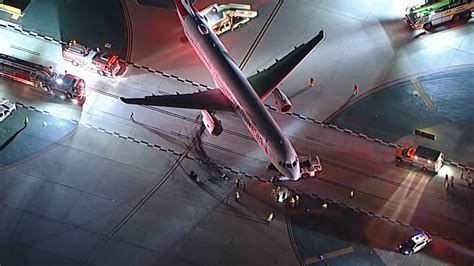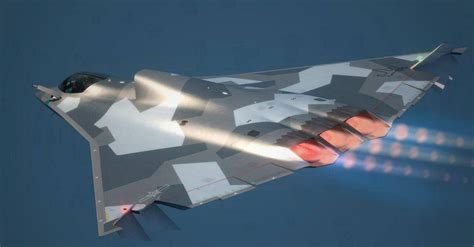
An American Airlines Boeing 787-8 Dreamliner, intended for Naples, Italy, was rerouted mid-flight to Rome due to the aircraft’s size exceeding the operational limitations of Naples Airport. The incident, which occurred on May 5, 2024, highlighted logistical challenges in aviation planning and raised questions about airport infrastructure preparedness for handling larger aircraft.
The American Airlines flight AA724, originating from Philadelphia, was diverted approximately 200 miles from its intended destination. According to an American Airlines spokesperson, the unscheduled change was a proactive measure. “On May 5, American Airlines flight 724 from Philadelphia to Naples, Italy, diverted to Rome Fiumicino International Airport due to aircraft suitability,” the airline stated. The Boeing 787-8 Dreamliner, while a common aircraft in long-haul operations, presented compatibility issues with the facilities at Naples Airport, particularly concerning the available space for maneuvering and parking.
Naples Airport, officially known as Naples International Airport (NAP), is a significant gateway to the Campania region but is constrained by its relatively compact size and location within a densely populated urban area. The airport’s infrastructure, while capable of handling numerous daily flights, is primarily geared towards smaller to mid-sized aircraft. The Boeing 787-8, with its considerable wingspan and overall length, requires more extensive ground facilities than are currently available in Naples. This includes adequately sized parking stands, taxiways capable of accommodating the aircraft’s turning radius, and sufficient clearance from nearby structures.
The decision to divert the flight was made in consultation with both American Airlines’ operational control and the relevant air traffic control authorities. The primary concern was ensuring the safety and efficiency of the flight. Attempting to land and maneuver the Boeing 787-8 at Naples Airport could have potentially resulted in ground incidents, delays, or even damage to the aircraft or airport infrastructure.
Passengers aboard flight AA724 were informed of the diversion while en route. Upon arrival in Rome, they were provided with ground transportation to Naples. American Airlines arranged for buses to transport passengers the remaining distance, a journey of approximately three hours. The airline acknowledged the inconvenience caused by the rerouting and provided assistance to affected passengers, including meal vouchers and updated travel information. “All customers were transferred to Naples by bus,” the American Airlines spokesperson confirmed.
The incident has prompted a renewed discussion regarding the adequacy of airport infrastructure in accommodating increasingly larger aircraft. As airlines continue to incorporate more fuel-efficient and high-capacity aircraft like the Boeing 787 and Airbus A350 into their fleets, airports must adapt to handle these aircraft safely and efficiently. This requires significant investment in infrastructure upgrades, including expanding parking stands, widening taxiways, and enhancing ground handling equipment.
The Naples Airport incident is not an isolated case. Similar situations have occurred at other airports worldwide, particularly those with older infrastructure or limited space for expansion. These incidents underscore the importance of thorough pre-flight planning and communication between airlines and airport authorities to ensure that the aircraft assigned to a particular route are compatible with the destination airport’s capabilities.
Aviation experts emphasize the need for a comprehensive assessment of airport infrastructure to identify potential limitations and implement necessary upgrades. This assessment should consider not only the physical dimensions of the aircraft but also factors such as the weight-bearing capacity of the pavement, the availability of specialized ground support equipment, and the proficiency of ground handling personnel.
Furthermore, effective communication protocols between airlines, airports, and air traffic control are crucial for preventing similar incidents in the future. This includes sharing detailed aircraft specifications, airport infrastructure information, and any relevant operational constraints. By fostering closer collaboration and information sharing, the aviation industry can mitigate the risk of aircraft-airport incompatibility and ensure the safe and efficient flow of air traffic.
The incident also highlights the complexities involved in airline route planning and the various factors that must be considered beyond simply passenger demand. Airlines must carefully evaluate the infrastructure capabilities of each airport on their network and ensure that the aircraft assigned to a particular route are compatible with those capabilities. This requires a thorough understanding of airport dimensions, ground handling procedures, and any operational limitations that may exist.
Looking ahead, the aviation industry is likely to see continued growth in the use of larger, more fuel-efficient aircraft. This trend will place increasing pressure on airports to upgrade their infrastructure and adapt to the demands of these aircraft. Airports that fail to do so risk becoming bottlenecks in the air transportation system, potentially limiting their ability to attract new routes and serve the growing needs of passengers and cargo.
The Naples Airport incident serves as a valuable reminder of the importance of proactive planning, infrastructure investment, and effective communication in ensuring the safety and efficiency of air travel. By addressing these challenges head-on, the aviation industry can continue to evolve and meet the ever-changing demands of the global marketplace. The incident also brings to the forefront the critical balance between operational efficiency, infrastructure limitations, and passenger convenience.
The diversion also resulted in logistical challenges for the passengers. After landing in Rome, they had to endure a three-hour bus ride to reach their original destination, Naples. This unexpected extension of their journey caused inconvenience and fatigue, particularly for those with connecting flights or time-sensitive commitments. American Airlines’ efforts to provide ground transportation and assistance were aimed at mitigating the disruption, but the incident underscores the potential impact of operational decisions on passenger experience.
Moreover, the incident highlights the broader issue of airport capacity and infrastructure constraints in Europe. Many European airports, particularly those located in densely populated urban areas, face limitations on expansion due to environmental regulations, land availability, and community opposition. This can lead to operational challenges, such as the Naples Airport incident, where the airport’s infrastructure is not fully compatible with the latest generation of aircraft. Addressing these constraints will require innovative solutions, such as optimizing existing infrastructure, investing in new technologies, and fostering closer collaboration between airports, airlines, and government authorities.
In the wake of the incident, aviation industry observers have called for a comprehensive review of airport infrastructure and operational procedures to identify potential vulnerabilities and prevent similar incidents in the future. This review should involve all stakeholders, including airlines, airports, air traffic control agencies, and regulatory authorities. The goal is to develop a set of best practices that ensure the safe and efficient operation of aircraft at all airports, regardless of their size or location.
The incident also has implications for the tourism industry in Naples and the Campania region. Naples is a popular tourist destination, attracting visitors from around the world with its rich history, cultural attractions, and scenic beauty. The airport plays a vital role in facilitating tourism by providing convenient access to the region. However, if the airport is unable to accommodate larger aircraft, it could potentially limit the growth of tourism and hinder the region’s economic development. Therefore, investing in airport infrastructure is essential for supporting the tourism industry and ensuring the long-term prosperity of Naples and the Campania region.
Furthermore, the incident raises questions about the environmental impact of aviation. Larger aircraft like the Boeing 787-8 Dreamliner are generally more fuel-efficient than older aircraft, but they also require more extensive ground facilities and generate more noise. As airports expand to accommodate these aircraft, they must carefully consider the environmental consequences and implement measures to mitigate their impact. This includes investing in noise reduction technologies, promoting sustainable airport operations, and working with airlines to reduce emissions.
The Naples Airport incident serves as a case study in the complexities of modern aviation and the challenges of balancing operational efficiency, infrastructure limitations, and environmental concerns. By learning from this incident and implementing appropriate measures, the aviation industry can continue to improve the safety, efficiency, and sustainability of air travel.
The incident also underscores the importance of crew resource management (CRM) in aviation. CRM is a set of training procedures designed to improve communication, decision-making, and teamwork among flight crew members. In the case of flight AA724, the pilots and other crew members had to work together to assess the situation, communicate with air traffic control and American Airlines’ operational control, and make the decision to divert the flight to Rome. Effective CRM skills were essential for ensuring the safety of the flight and the well-being of the passengers.
The diversion of flight AA724 also had implications for the airport in Rome. Fiumicino Airport (FCO), also known as Leonardo da Vinci Airport, is the largest airport in Italy and one of the busiest in Europe. The unscheduled arrival of the Boeing 787-8 Dreamliner required the airport to allocate resources to accommodate the aircraft and the passengers. This included providing parking space, ground handling services, and transportation to Naples. While Fiumicino Airport is well-equipped to handle large aircraft, the unexpected arrival of flight AA724 added to the airport’s workload and required careful coordination among various departments.
The incident also highlights the importance of having contingency plans in place for dealing with unexpected events. Airlines and airports must be prepared to respond to a variety of situations, such as weather delays, mechanical problems, and airport closures. These contingency plans should include procedures for diverting flights, providing accommodation for passengers, and communicating with the public. The effectiveness of these contingency plans can have a significant impact on the overall passenger experience and the reputation of the airline and the airport.
In the aftermath of the incident, American Airlines conducted an internal review to determine the root cause of the problem and prevent similar incidents in the future. This review likely involved examining the airline’s route planning procedures, communication protocols, and training programs. The goal was to identify any weaknesses in the system and implement corrective actions to improve the airline’s overall operational performance.
The incident also serves as a reminder of the importance of staying informed about the latest developments in aviation technology and infrastructure. The aviation industry is constantly evolving, with new aircraft, new technologies, and new procedures being introduced on a regular basis. Airlines, airports, and air traffic control agencies must stay abreast of these changes and adapt their operations accordingly. This requires ongoing training, investment in new equipment, and a commitment to continuous improvement.
The Naples Airport incident is a complex issue with multiple dimensions. It highlights the challenges of balancing operational efficiency, infrastructure limitations, passenger convenience, environmental concerns, and safety considerations in modern aviation. By addressing these challenges proactively and collaboratively, the aviation industry can continue to provide safe, efficient, and sustainable air travel for passengers around the world.
Further, the incident brought attention to the role of technology in mitigating such errors. Advanced navigation systems, real-time data sharing between airlines and airports, and sophisticated airport management software could potentially prevent similar incidents by providing accurate information about aircraft compatibility and airport capabilities. Investing in and utilizing these technologies can enhance operational efficiency and reduce the risk of miscommunication or oversight.
The economic impact of the diversion also deserves consideration. While the cost of diverting a single flight may seem minimal, repeated incidents can have significant financial implications for airlines, airports, and the tourism industry. These costs include fuel consumption, ground handling fees, passenger compensation, and potential damage to reputation. Preventing such incidents through improved planning and infrastructure investment can contribute to greater economic stability and sustainability.
In addition to the immediate consequences, the incident also raises long-term questions about the future of air travel and airport development. As global air traffic continues to grow, airports will face increasing pressure to expand their capacity and accommodate larger aircraft. However, many airports are constrained by physical limitations, environmental concerns, and regulatory restrictions. Finding innovative solutions to these challenges will be crucial for ensuring the continued growth and sustainability of the aviation industry. This may involve exploring alternative airport designs, investing in high-speed rail connections, or developing new technologies that can reduce the environmental impact of air travel.
Moreover, the incident underscores the importance of international cooperation in aviation. Air travel is a global industry, and airlines operate across national borders on a daily basis. This requires close coordination and cooperation among airlines, airports, air traffic control agencies, and regulatory authorities from different countries. Sharing information, harmonizing regulations, and developing common standards can help to prevent incidents like the Naples Airport diversion and ensure the safe and efficient operation of air travel around the world.
The situation serves as a valuable lesson for other airports and airlines worldwide. It highlights the importance of verifying airport compatibility before scheduling flights, particularly when using larger aircraft. This involves not only checking runway length and width but also assessing the availability of suitable parking stands, taxiways, and ground handling equipment. By learning from the Naples Airport incident, other airports and airlines can take steps to prevent similar occurrences and ensure the smooth operation of their services.
Furthermore, the incident underscores the need for airlines to have robust communication channels with passengers. In situations where flights are diverted or delayed, it is essential to keep passengers informed about the reasons for the disruption and the steps being taken to mitigate the impact. This can help to reduce passenger frustration and maintain trust in the airline. Airlines should also provide passengers with assistance, such as meal vouchers, accommodation, and transportation, to minimize the inconvenience caused by the disruption.
The Naples Airport incident is a reminder that even in the age of advanced technology and sophisticated planning, human error and unforeseen circumstances can still occur. It highlights the importance of being prepared for the unexpected and having contingency plans in place to deal with disruptions. By learning from this incident and taking appropriate measures, the aviation industry can continue to improve the safety, efficiency, and reliability of air travel. The event underscores the constant need for vigilance and proactive management in an industry where safety and precision are paramount.
The incident also shone a light on the customer service aspect of air travel. Passengers who experienced the diversion likely faced significant inconvenience and disruption to their travel plans. The way in which American Airlines handled the situation, including providing transportation and assistance, played a crucial role in shaping passenger perceptions and maintaining customer loyalty. Effective customer service in such situations can help to mitigate the negative impact of disruptions and ensure that passengers have a positive overall experience.
Frequently Asked Questions (FAQ):
1. Why was the American Airlines flight diverted from Naples to Rome?
The American Airlines flight AA724 was diverted from Naples International Airport (NAP) to Rome Fiumicino International Airport (FCO) because the Boeing 787-8 Dreamliner, the aircraft used for the flight, was deemed too large for the infrastructure at Naples Airport. This included concerns about the aircraft’s wingspan and maneuvering space on the ground. As stated by American Airlines, the diversion was due to “aircraft suitability.”
2. What specific limitations at Naples Airport made it unsuitable for the Boeing 787-8?
Naples Airport has limitations in terms of parking stand size, taxiway width, and overall maneuvering space necessary for a Boeing 787-8. The airport’s infrastructure is primarily designed for smaller to mid-sized aircraft, and the larger dimensions of the 787-8 would have posed challenges for safe and efficient ground operations.
3. How were the passengers affected by the diversion, and what steps did American Airlines take to assist them?
Passengers were significantly inconvenienced as they had to disembark in Rome and were transported to Naples by bus, a journey of approximately three hours. American Airlines provided ground transportation, meal vouchers, and updated travel information to assist the affected passengers.
4. Has this type of incident happened before, and what does it say about airport infrastructure globally?
Yes, similar incidents have occurred at other airports worldwide, particularly those with older infrastructure or limited space for expansion. These incidents highlight the importance of thorough pre-flight planning and communication between airlines and airport authorities. They also underscore the need for continuous investment in airport infrastructure to accommodate larger, more modern aircraft.
5. What are the potential long-term implications of this incident for Naples Airport and the surrounding region?
The incident could potentially limit the growth of tourism and hinder the region’s economic development if the airport is unable to accommodate larger aircraft. Investing in airport infrastructure is essential for supporting the tourism industry and ensuring the long-term prosperity of Naples and the Campania region. The incident serves as a case study for other airports and airlines worldwide to verify airport compatibility before scheduling flights, particularly when using larger aircraft.









